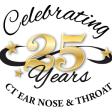Sinusitis is an inflammation of the sinus lining. If the sinus opening becomes blocked due to this swelling, normal mucus drainage may not occur, and this may lead to recurrent sinus infections and painful symptoms. Sinusitis can be acute, lasting for less than four weeks, or chronic, lasting longer than 12 weeks. When sinus symptoms either last longer than 12 weeks, or if you experience more than 4 sinus infections each year, you should see an ENT doctor to discuss treatment options.
Sinusitis is often preceded by a cold or allergy attack. Colds and allergies can lead to inflamed sinuses, causing the sinus openings to become blocked. This prevents normal mucus drainage and can result in sinusitis.
Common symptoms of both acute and chronic sinusitis include: (1)
- Facial pain
- Tenderness and swelling around the eyes, cheeks, nose and forehead
- Sinus pressure or congestion
- Difficulty breathing through the nose
- Loss of the sense of smell or taste
- Sinus Headache
- Yellow or green mucus from the nose
- Teeth pain
- Fatigue
- Sore throat from nasal discharge
- Bad breath
Many types of physicians including general and family practice physicians, pediatricians, and allergists may prescribe medication for sinusitis. However, if you have chronic sinusitis or if your symptoms do not improve with medication, you may be referred to an Ear, Nose, and Throat (ENT) doctor, or Otolaryngologist, who can discuss additional options to treat your chronic sinusitis.
- Sinusitis may be treated with natural therapy such as inhaling steam or using saline nasal sprays, or ENT doctors can prescribe medications such as antibiotics and nasal steroid sprays. However, clinical studies show up to 60% of sinusitis sufferers do not get relief with medication. (2) For patients who do not respond adequately to medications, an ENT doctor may recommend either a Balloon Sinuplasty procedure or traditional sinus surgery.
- Traditional sinus surgery removes bone and tissue to enlarge the sinus opening with the aim of clearing blocked sinuses and restoring normal sinus drainage. With this procedure, sinus surgery recovery may be associated with pain and scarring.
- Balloon Sinuplasty is an innovative, minimally invasive procedure that ENT doctors use to treat patients with sinusitis. A tiny balloon is placed into the nose to reach the blocked sinuses and then inflated to restructure the sinus opening. The procedure is safe and effective.
Balloon Sinuplasty received FDA clearance in 2005. Over 375,000 patients have been treated by ENT surgeons using this technology.
Clinical research confirms that Balloon Sinuplasty provides long-term relief from sinus symptoms by effectively opening blocked sinus passageways.(3)
How long your sinuses stay open depends on the extent of your sinus disease or other factors. Balloon Sinuplasty restructures the sinus opening, restoring normal sinus drainage. It is unlikely that you would require repeat procedures, but the procedure may be repeated if your ENT deems it necessary.
More than 375,000 people around the world have experienced Balloon Sinuplasty, including over 35,000 people in the office setting.
Balloon Sinuplasty is less invasive than traditional sinus surgery with minimal bleeding. (4) While recovery time varies with each patient, recovery is typically fast. In a study of in-office balloon dilation, most patients returned to work and normal activity within 2 days.(5)
Yes. Clinical studies have shown that Balloon Sinuplasty is safe, minimally invasive, and significantly improves quality of life. (3)
The balloon is made from a high strength plastic that does not contain latex.
Because Balloon Sinuplasty is minimally invasive, there is a very low complication rate. But there are some associated risks, including tissue and mucosal trauma, infection, or possible optic injury. Talk with your doctor about the risks and benefits and to determine whether Balloon Sinuplasty is right for you.
Since the duration of the procedure varies, ask your healthcare provider for the most accurate answer. However, in a study of more than 1,000 patients, the average procedure time in the operating room was 73 minutes. (4) None of the patients required an overnight stay at the hospital.
An increasing number of ENT doctors perform the procedure in the office, under local anesthesia. Your healthcare provider can best advise you on your anesthesia options.
Patients go home the same day that they have the procedure. While recovery time will vary from patient to patient, many people can quickly return to normal activities.(5)
No. Surgeons may use Balloon Sinuplasty with other medical therapies, and it does not limit future treatment options for patients.
No. ENT doctors may use Balloon Sinuplasty with other medical therapies, and it does not limit future treatment options for patients.
Yes, Balloon Sinuplasty is a safe and effective option to relieve chronic sinusitis symptoms in children’s maxillary sinuses.
Your cost will vary depending on your insurance coverage and if you have the procedure performed in the office or hospital. Speak with your insurance company about the cost.
Yes. Medicare covers Balloon Sinuplasty both in the office and hospital settings.
Although the majority of insurance carriers cover Balloon Sinuplasty, contact your insurance provider to determine your specific policy.

